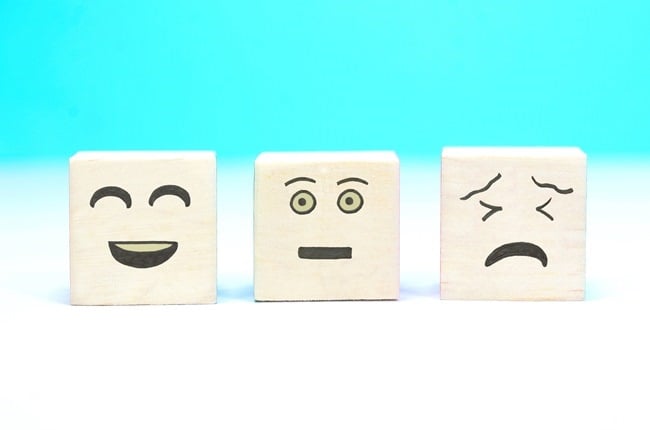
Generally, people with depression will feel sad, empty and/or irritable, and will struggle to function optimally. The different types of depression do, however, differ in terms of duration of symptoms and timing.
Persistent depressive disorders
There are two persistent depressive disorders:
1. Major depressive disorder (MDD)
This type of depression (also called “unipolar depression” or “major depression”), which includes major depressive episodes, is defined as a depressed mood or loss of interest and pleasure in almost all activities for at least two weeks.
Several other symptoms must also be present, including sleep disturbances, appetite disturbances, change in energy levels, difficulty thinking and concentrating, sexual difficulties, slowed movements or thoughts, and suicidal thoughts. These symptoms must interfere with usual behaviour and functioning to warrant the diagnosis.
Some people with MDD also suffer from psychotic features (“psychotic depression”), which may include hallucinations and delusional thinking.
2. Persistent depressive disorder (dysthymia)
Dysthymia is diagnosed in individuals who experience a depressed mood for at least two years. Symptoms tend to be the same as those associated with MDD, but they tend to interfere less with day-to-day functioning. They are, however, chronic and may continue for years – so much so that the person may never feel truly happy.
Due to the long-term impairment of functioning, many individuals with dysthymia don’t realise their full potential. This type of depression can therefore have severe long-term consequences and be very disabling.
Recurrent brief depression
This mental disorder is characterised by intermittent depressive episodes. It presents with the same symptoms as MDD, but episodes last less than two weeks. The condition must be present monthly for at least a year in order for the diagnosis to be made.
Premenstrual dysphoric disorder
Some women experience depressive symptoms in the week before menstruation. If this is the case every month for at least a year, and interferes with the woman’s relationships and day-to-day functioning, she may have premenstrual dysphoric disorder – a severe form of premenstrual syndrome (PMS).
The symptoms usually start to improve a few days after the onset of menses and should become minimal or absent in the week after the woman experiences her period.
Postpartum (postnatal) depression
This describes depression during pregnancy or after childbirth that is more severe, and which lasts longer, than transient “baby blues”. Women with postpartum depression experience full-blown major depression.
Bipolar disorder
Bipolar disorder (previously called “manic depression”) differs from depression. However, individuals who have this illness also experience depressive episodes, which is why it’s included here.
Bipolar disorder involves episodes of depression and episodes of mania/euphoria. The switches between these two states may be fairly sudden and dramatic but are usually gradual in onset. Both mood states may also co-exist (“mixed bipolar disorder”).
During episodes of mania, the person’s judgement is often impaired. This can result in socially embarrassing behaviour, sexual indiscretions, excessive spending, and unwise business decisions.
Bipolar disorder tends to be a chronic, recurring condition and is generally considered to have a poorer long-term outcome as MDD.
Other types of depression
Depressive disorders may also be linked to:
- Drug and alcohol abuse (this is called “substance-induced depression”)
- Prescription medication (e.g. anti-hypertension drugs, progesterone contraceptives, benzodiazepines)
- Medical illnesses (“depressive disorder due to another medical condition”)
- The seasons (a form of major depressive disorder known as “seasonal affective disorder”)
Take note: Depression often co-exists with other mental health conditions, including generalised anxiety disorder (GAD), obsessive-compulsive disorder (OCD) and panic disorder.
Reviewed by psychiatrist Dr Matthew Mausling, Life Kingsbury Hospital, Claremont. October 2018.
Read more:




 Publications
Publications
 Partners
Partners
















